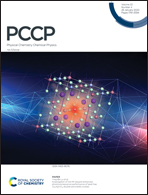Ultra-thick electrodes based on activated wood-carbon towards high-performance quasi-solid-state supercapacitors†
Abstract
Wood carbon (WC)-derived thick electrode design has recently received increasing interest because of its high energy density at the device level. Herein, a facile, low-cost, and efficient strategy by surface engineering to synthesize ultrathick electrodes of quasi-solid-state symmetric supercapacitors (SSCs) based on activated wood-carbon (AWC) monoliths is presented. The AWC as a freestanding ultrathick electrode shows an impressive areal capacitance of 6.85 F cm−2 at 1 mA cm−2 and 4.55 F cm−2 at 20 mA cm−2. Furthermore, a quasi-solid-state SSC assembled by two identical AWC monoliths delivers an excellent energy density of 0.23 mW h cm−2 (4.59 W h kg−1 and 0.77 W h L−1) at 500 mW cm−2 (9.9 mW kg−1 and 2500 W L−1) while maintaining a capacitance retention of 86% after 10 000 cycles. The remarkable electrochemical performance is associated with the structural integrity of natural wood, the introduction of oxygen-containing functional groups, and the ultrathick electrode design, which significantly enhance electroactive material loading and device integration.



 Please wait while we load your content...
Please wait while we load your content...